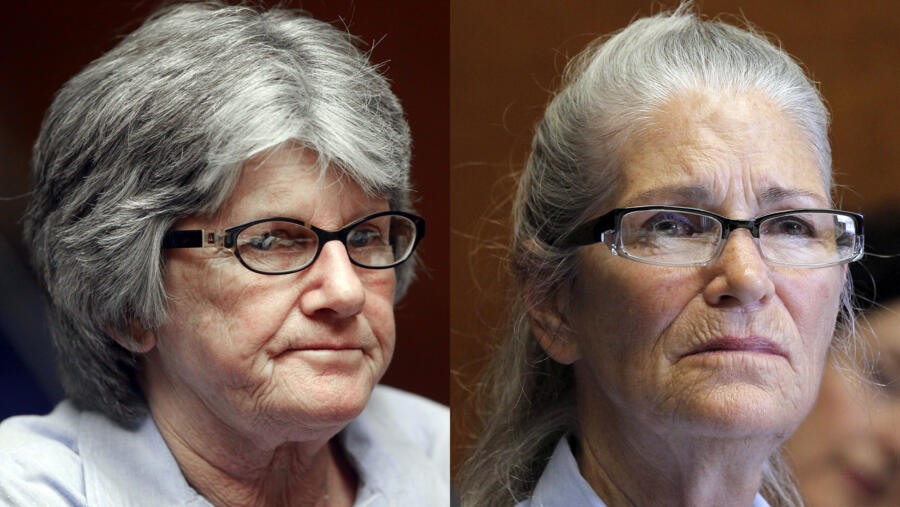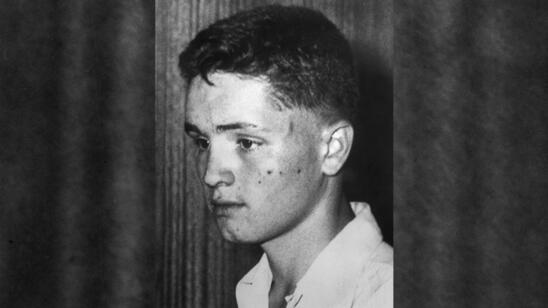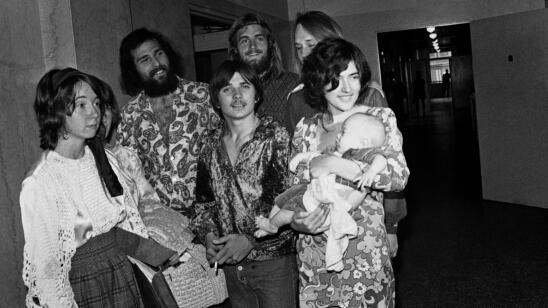There’s not a lot left to write about Charles Manson. The notorious cult leader’s crimes—and his larger-than-life persona—left a permanent scar on history while also prompting countless psychological excavations into what made Manson tick. What hasn’t been explored as deeply is his band of followers: the “Family” of people who did his bidding in the Tate-LaBianca mass murders on August 9, 1969.
In her book, The Manson Women and Me: Monsters, Morality, and Murder, journalist and therapist Nikki Meredith delves into the psychologies of two of Manson’s most infamous followers: convicted murderers Leslie Van Houten and Patricia Krenwinkel.
A Los Angeles area native, Van Houten was only 19 at the time of her arrest for the murders of Leno and Rosemary LaBianca. (She stabbed Rosemary 14 times.) Krenwinkel was also an L.A. native and was arrested for her roles in both the Tate and LaBianca murders. (She chased down and brutally stabbed coffee heiress/social worker Abigail Folger at Sharon Tate’s Bel Air home.)
In 1996, Meredith struck up what would become a decades-long correspondence with both women, writing to them and later visiting them. Throughout her long, nuanced relationships with both convicts, Meredith gained an inside glimpse at their histories. She was surprised at how average both women seemed growing up: educated, middle class, with seemingly promising futures. Yet each woman found herself drawn into Manson’s grip for different reasons—and each woman went on to kill in his name.
A&E True Crime spoke with Meredith about what Van Houten and Krenwinkel are like today.
Why did you start writing to Leslie and Patricia? Did you know you wanted to write a book about them?
I’m a journalist, so clearly my hope was that something would come out of it. But I was curious about the dramatic difference between the women I saw in a documentary [that humanized them] and my recollection of these snotty little brats that were mocking the victims during the trial.
I was also curious because during the trial, [prosecutor] Vincent Bugliosi had said to the jury, ‘These are human monsters, they’re mutations. There’s no reason for them to go on living.’ And [Van Houten’s] attorney said, ‘Don’t kill them, study them. Let’s learn from them rather than sending them to the death chamber.’ And so I [wondered]: Did we learn anything from this?
[Stream episodes of Killer Cases in the A&E app.]
You have a background as a therapist. Did you also seek to understand them on a psychological level?
In my experience both as a clinical social worker and as a journalist, I had always been interested in criminal justice and had been exposed to a lot of psychopaths and sociopaths. I just didn’t know where they fit in. I always tended to stay away from labels when encountering new people. And it was pretty clear that the prosecution thought these women were psychopaths.
You went to school with Catherine Share, who worked as Manson’s recruiter. Tell me about her.
Catherine Share was one of Manson’s tribe; she’s the one who recruited Leslie Van Houten. From [the book] Helter Skelter, Share was a totally different person than the one I had known in high school. We’d been in the same social club, and we had spent this one slumber party together getting to know each other. I was so charmed by her.
She was bright; she was very different than the run-of-the-mill Hollywood High girl at the time. She had been orphaned by the Holocaust and adopted by a man who was not very nice to her. I think her relationship with her adoptive father could explain her attraction to Manson. He had a gift for attracting women who had bad relationships with their fathers.
You wrote that Van Houten and Krenwinkel both told you that they weren’t able to recognize the terror of their victims while they were killing them.
Absolutely right. It took five years for those women to feel anything for their victims. For both Leslie and Pat, it was different things that [made them feel for the victims]. When Pat got to prison, she would quote Manson and all the brilliant things he had said. The old-timers in prison said, ‘God, that’s what all pimps say. He’s just a pimp!’ [Their responses] started to work on her and she started to see him in a different light.
But neither of them had an epiphany where they [suddenly] realized how horrible it was. It happened slowly.
How did that differ for each woman?
Pat does needlepoint and she described it…as having this big ball of thread. One strand at a time, she looked at her relationship with [him] and started to understand how he had seduced her and perverted her views.
Both women were actually pretty ideological. Pat had strong feelings about the war in Vietnam. Leslie was…more spiritually motivated, and he seemed to answer those needs. By the time I met them, they were not under his thumb at all. In fact, they were really hostile to it.
What other ways did you see them change over the years as you got to know them?
Pat was an interesting case. Our correspondence was great; we agreed politically on almost everything. But in person, she was very difficult. I didn’t know if she liked me, though her letters were so warm. And she was really interested in my family.
I wanted her to explore her own involvement [in the killings in] a little more depth. Once I told her that I used to have a reoccurring dream when I was young about being chased by Nazis and pleading for my life. I was trying to get [a sense] of how she’d react. And she said, ‘If you’re asking me, did Abigail Folger appeal to my humanity? She did, but I had none to give her.’
She was capable of looking at it from that [angle] and she was very honest about it. She chased Abigail Folger down in this grassy area and kept stabbing her, and finally Folger said to her, ‘I don’t know why you’re doing this. I’m already dead.’
Leslie only got more wise and more educated [over the years]. She was always taking classes; she now has a master’s degree. She never backed away from being brutally honest about her participation in [the murders] and how she was manipulated by Manson.
What was the most shocking or surprising thing you learned from them?
Pat met Manson in coffee houses where he was singing Spanish love songs. I saw photos of him during that period. He was actually good looking—he had this James Dean quality to him. He seduced them in different ways. He had a real gift for knowing what each woman needed.
Pat needed someone who would accept her for who she was because she’d always been very self-conscious about her body and she’d been rejected a lot. He told her she was beautiful the way she was and that society had screwed her up. To Leslie, he was a spiritual leader and he said things that seemed profound.
The thing that continued to shock me was, five years on, when you have murdered someone, when you have felt a knife go into somebody’s body, when you’ve seen the suffering on their faces, you still do not feel that. They were completely numb to any feelings for the victims. They described in great detail, especially Leslie, the suffering that Mrs. LaBianca was feeling—not just the physical suffering, but when she was listening to her husband being murdered in the next room. But they didn’t [lack] empathy; they had a lot of it for each other and they had a lot of it for Manson.
Did you learn anything surprising about Manson?
I didn’t really spend a lot of time on him. He was a textbook psychopath. His childhood was terrible.
Do you think Leslie and Patricia have served their time?
I absolutely believe that Leslie should be out. I think she should have been out 20 years ago. She was ready and has so much to offer.
I’m not at all worried that Pat would be a danger. I guess it’s hard to express an opinion because…she was involved both nights and there were so many people killed. The chances are so remote that she could get out.
[Update: On July 11, 2023, Leslie Van Houten was released on parole. According to her lawyer, Van Houten was taken to transitional housing in an undisclosed location.]
Related Features:
What Was Charles Manson’s Life Like Before He Formed ‘The Family’ Cult?
Read an Excerpt from The Manson Women and Me


